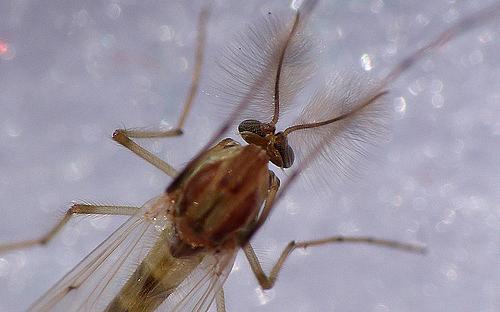Hotter Weather Facilitates Disease Outbreaks

This summer has brought us record heat waves in many parts of the world. Even Siberians have been basking on the beach in bikinis. But one aspect of how a warming planet affects our lives that doesn’t receive as much coverage is the increased spread of infectious diseases. Hotter temperatures create an incubator for vector-borne ills, like dengue fever, Lyme disease and West Nile virus, which are showing up in places they never occurred before.
Subtle changes in the climate -- warmer winters, wetter and earlier springs, and greener environments because of more rainfall -- contribute to increasing pest populations. Mosquitoes, ticks, mice and other disease carriers are surviving milder winters, enabling them to expand their range into newly hospitable habitats -- and the sometimes deadly pathogens hosted by these vectors are now moving to warming regions, too. The blacklegged ticks that spread the Lyme-causing bacteria have migrated from where the disease was first identified, in Connecticut, to Canada, according to recent studies, and researchers predict the process will “accelerate with climate change.”
The Aedes albopictus mosquito, a highly aggressive species that breeds in containers, is another example. The insect, also called the Asian tiger mosquito because of its distinctive black and white stripes, can transmit West Nile virus, dengue, yellow fever, encephalitis and Chikungunya, a particularly nasty infection that causes painful arthritis-like joint pain. First introduced in the United States in the 1980s -- most likely as a stowaway inside recycled tires imported from Japan to Houston, Texas -- the mosquito has spread to 36 states. Most recently it has established a beach head on Long Island in New York, according to an April 2013 study conducted by a team of vector control scientists in New York, New Jersey and Pennsylvania, mainly because of the hotter, wetter weather. By the end of this century, with winter temperatures in the northeastern U.S. predicted to rise by between 1.7 degrees Celsius to 5.4 degrees C (about three degrees Fahrenheit to nine degrees Fahrenheit), these researchers predict the insect will infest all the major urban centers on the Atlantic Coast, making over 30 million people who live in these areas vulnerable to locally acquired infections.
How the West Nile virus became entrenched in North America provides a cautionary tale of how changing global weather is spreading disease. While most people infected with the virus don’t become ill, or may experience mild flu-like symptoms such as a headache, sore throat or fatigue, in the elderly, young children or people with compromised immune systems, West Nile can be a killer. The virus can attack the nervous system and cause encephalitis, meningitis or brain trauma that may lead to permanent disability, neurological damage, and death.
The deadly pathogen first emerged in the West Nile district of Uganda in 1937 and is fairly common in Africa, West Asia and the Middle East, occasionally flaring up into epidemics, such as one in Israel in the 1950s and in Romania in 1996. Each of these outbreaks occurred after an unusually dry, hot spell, according to research by Israeli scientists, creating the perfect incubator for the Culex pipiens, the most transmitter of West Nile in the U.S.
In 1999, the virus arrived in New York, most likely hiding in a mosquito stowaway on a plane arriving at JFK or in the bloodstream of someone already infected -- potentially an Israeli from Tel Aviv, which was in the midst of an outbreak. Once again, the summer was unusually hot and dry in New York -- the hottest July on record at that time -- and the high temperatures helped West Nile gain a foothold. By August, triple digit temperatures followed by heavy rains and flooding made the mosquito populations explode.
Within five years, the virus spread across North America and is now present from Canada to Argentina. In the hot, dry summer of 2012, every state in the continental U.S. reported infections, with 5,674 West Nile-related illnesses and 286 deaths, according to the Centers for Disease Control and Prevention, making the outbreak the deadliest one yet. In Texas, which was the hardest hit in 2012, more than 1,800 were sickened and 89 people died. Experts blamed the weather patterns associated with global warming -- a mild preceding winter, excess precipitation -- on the epidemic.
“In North America,” concluded CDC researchers, in a review article earlier this month in the Journal of the American Medical Association, “West Nile virus has and will remain a formidable clinical and public health problem for years to come.” Those researches believe that all told, more than 780,000 illnesses have likely occurred, with more than 16,000 cases of neurological disease and 1549 deaths, since the virus landed here 14 years ago.
Image by Hugo Quintero via Flickr
Linda Marsa's book FEVERED will be available on August 6, 2013, wherever books and e-books are sold.

